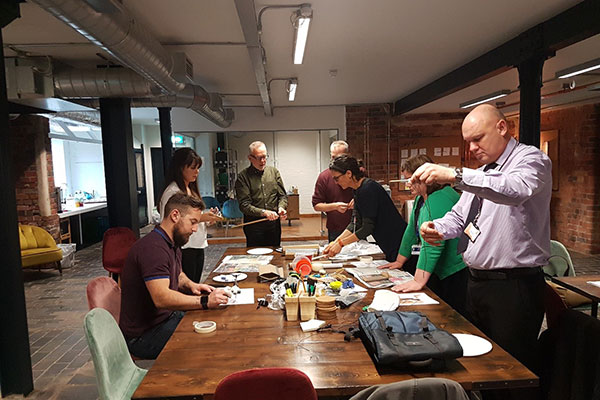The world has problems. Designers create solutions. Design has moved past the idea that it is all about aesthetics, but are we telling young people that? As the structure of society shifts, is the education system telling students that pursuing design in school is preparation for a career in solving some of society’s biggest problems?
The RSA is running the Pupil Design Awards for the fifth year, and we are aiming to reach young people who will be the designers of tomorrow.
The RSA has a range of projects that look at challenges facing society today and how to create a better future. Of course, many argue that the challenges of tomorrow are unknown, but to what extent do we believe that to be true? We live in a time of increasing economic insecurity, and an RSA Populus survey shows we are well aware of the challenges posed by inequality and impending climate crisis (amongst others) to our society. There are huge disparities in health outcomes that can be predicted with astonishing accuracy based on your postcode. The ‘education by numbers’ game has distorted the outcomes our schools are striving to attain with ruthless efficiency. It could be argued that the challenges of the near future are plain to see. Recent research we have undertaken at the RSA found that young people are the experts we have been waiting for in determining how we might be able to tackle the thorny issues that communities are facing across the country.
How the competition works
The Pupil Design Awards sets students on a path of understanding how human-centred design principles and methodologies can be applied to social challenges to create impactful solutions. This year, the three briefs set for students focus on:
- The relationship of food with health and wellbeing;
- The increasing prevalence of loneliness across our society;
- The importance of work experience to helping students understand the employment market both now and tomorrow.
We have deliberately kept the briefs broad so that students have the chance to identify challenges that they want to solve and investigate a specific part of a big issue that they want to tackle. We want students to understand that engaging in well thought-out, methodical research with people who are experiencing a particular challenge can provide insights that otherwise would have remained invisible.
To correct this error:
If you do not have a license file, please request one from EPiServer License Center.
Working from the insights gained from the research, students can begin exercising their idea-generating muscles - drawing on the knowledge and skills of the team to design ideas, test them with the target audience, and iterate based on how well they meet the needs identified.
For the competition, entrants must design a product, campaign or service to address the challenge they identify through their research, and submit an entry that shows the journey they went on to arrive at their design solution.
This year we partnered with Fixperts, to help us deliver teacher training at the start of the competition, to provide teachers with new tools for structuring the time students spend on their project, and a plan for how the competition might live within the curriculum or as an extracurricular activity.

We have also asked teachers why they are taking part in the competition. One answer that came up again and again was raising the profile of design and technology (D&T) in their school. In many cases DT departments are experiencing their budgets being squeezed and their teaching hours curtailed while exam entries decrease year on year. The Pupil Design Awards gives the D&T department a chance to demonstrate the value that design can have to a range of outcomes for students. That range of benefits is perhaps why it’s not just D&T teachers taking part. Teachers in subjects such as English and PSHE taking part this year also told us they saw the competition as helping to create a “greater sense of community, a developed sense of empathy and compassion for others” and “developing teamworking and problem-solving skills”.
Amongst these outcomes, teachers reported hopes that the competition would open up channels to collaborate with their peers in the school and external organisations, give them ideas for how a human-centred approach to design could become part of their scheme of learning, and provide a great vehicle for developing student voice. Throughout the year we’re going to monitor and evaluate our progress against these outcomes and adapt the programme next year based on our findings.
Each year we run the competition, the designs that participants create are inspiring, well-evidenced and heart-warming. Based on the detailed conversations and real enthusiasm from teachers at our training days, we don’t expect this year to be any different.
When the competition ends in July next year you will hear the judges saying; “Do not fear people, the designers of tomorrow are here – and they have the solutions to save us.” Watch this space!
If you are a teacher, of any subject, wanting to get involved in the competition and use our free resources to deliver a social design project in your classroom, please visit our website and get in touch with us using the request form on this page!

Be the first to write a comment
Comments
Please login to post a comment or reply
Don't have an account? Click here to register.